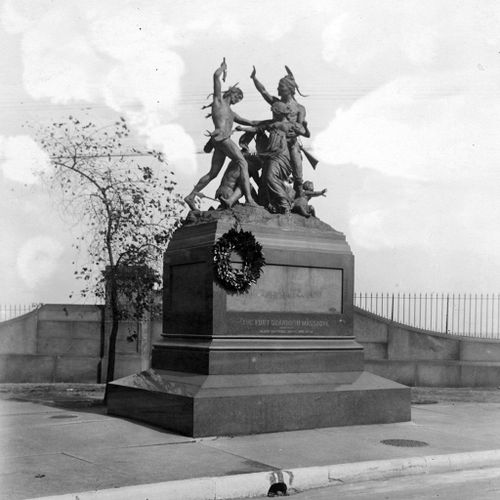Fort Dearborn Massacre

Title
Fort Dearborn Massacre
Date
1893
Artist
Carl Rohl-Smith (1848-1900)
Location
Storage
Context
Industrialist George Pullman (1831-1897) commissioned this monumental bronze figural group to be placed near his Prairie Avenue mansion — which was believed to be the site of the attack on the garrison evacuating Fort Dearborn during the War of 1812. The work shows Potawatomie chieftain Black Partridge intervening on behalf of Margaret Helm, wife of the fort's commander and the step-daughter of fur trader, John Kinzie. Danish sculptor Carl Rohl-Smith (in Chicago to create sculpture for the World's Columbian Exposition in 1893), based his figures on sketches he made of Indian models who were held captive at Fort Sheridan in the aftermath of the massacre at Wounded Knee. Conceived in a sensationalist, luridly violent mode, the sculpture was long criticized by American Indian activists and was removed from public view in 1997.